Ekaterina Galanta (born 1890s), often billed as Ketty Galanta, was a Russian dancer, a member of the Ballets Russes.
Ekaterina Galanta (born 1890s), often billed as Ketty Galanta, was a Russian dancer, a member of the Ballets Russes.
Galanta was born and raised in Petrograd. [1] [2] In 1917 she was described as being 20 [3] or 21 years old. [4] Nikolai Legat was her first ballet teacher. [5]

Galanta toured in the United States with the Ballets Russes in 1916, with Vaslav Nijinsky, Adolph Bolm, Flore Revalles, Lydia Lopokova, Olga Spessivtseva, and Valentina Kachouba, among others in the company of forty dancers. [6] [7] When the ballet company left the United States, she stayed behind to pursue a solo stage career. [5] She danced at the Metropolitan Opera House in Petruschka (1916). [8] While she was principal dancer in The Wanderer in New York in 1917, [9] she was a mentor to American dancer Martha Lorber. [10] In 1918 she was featured as a dancer in the musical Chu Chin Chow . [1]
Herbert Brenon cast Galanta in the silent film The Fall of the Romanoffs (1917, now lost). [11] [12] One critic found her performance distracting, saying "Ketty Galanta is vivid in the role of Anna; [her eyes] roll in a fashion so marvelous that one fears they may pop out of her head; consequently, the audience gasps in wonderment when it should merely feel the thrill of emotion." [13] She appeared in two more films, both directed by Brenon, Empty Pockets (1918), a murder mystery with Malcolm Williams, [14] [15] and The Passing of the Third Floor Back (1918), based on the Jerome K. Jerome play, and starring Johnston Forbes-Robertson. [16]

By 1922, Galanta moved to South America, [10] where she taught dance at her own studio [17] in Buenos Aires, Argentina. [18] One of her students in Buenos Aires was María Fux. [19] She was one of the founders of the Friends of Dance Association (AADA) there, along with fellow Ballets Russes dancer Tamara Grigorieva. [20]

Bronislava Nijinska was a Russian ballet dancer of Polish origin, and an innovative choreographer. She came of age in a family of traveling, professional dancers.

The Ballets Russes was an itinerant ballet company begun in Paris that performed between 1909 and 1929 throughout Europe and on tours to North and South America. The company never performed in Russia, where the Revolution disrupted society. After its initial Paris season, the company had no formal ties there.
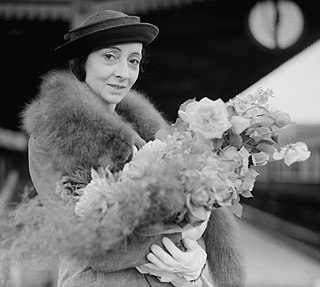
Olga Alexandrovna Spessivtseva was a Russian ballerina whose stage career spanned from 1913 to 1939.
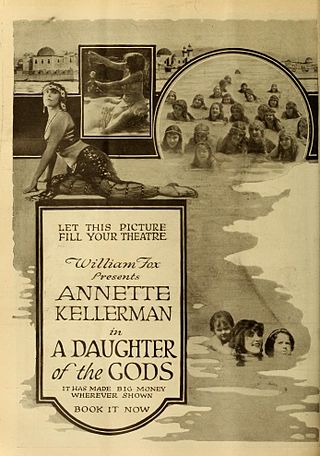
A Daughter of the Gods was a 1916 American silent fantasy drama film written and directed by Herbert Brenon. The film was controversial because of the sequences of what was regarded as superfluous nudity by the character Anitia, played by Australian swimming star Annette Kellermann. The scene is regarded as the first complete nude scene by a major star, which occurred during a waterfall sequence, though most of Kellerman's body is covered by her long hair. It was filmed by Fox Film Corporation in Kingston, Jamaica, where huge sets were constructed, and directed by Herbert Brenon.
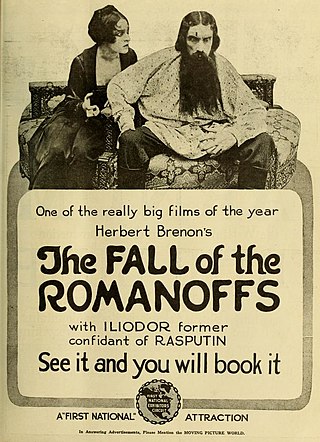
The Fall of the Romanoffs is a 1917 silent American historical drama film directed by Herbert Brenon. It was released only seven months after the abdication of Tsar Nicholas II in February 1917. This film is notable for starring Rasputin's rival, the monk Iliodor, as himself. Costars Nance O'Neil and Alfred Hickman were married from 1916 to Hickman's death in 1931. The film was shot in North Bergen, New Jersey, nearby Fort Lee, New Jersey, where many early film studios in America's first motion picture industry were based at the beginning of the 20th century.

The Passing of the Third Floor Back is a 1918 British/American silent allegorical film based on the 1908 play The Passing of the Third Floor Back by Jerome K. Jerome and directed by Herbert Brenon. The star of the film is Sir Johnston Forbes-Robertson, a legendary Shakespearean actor, who starred in the 1909 Broadway presentation of the play and its 1913 revival. Forbes-Robertson had been knighted by King George V in 1913 and had retired from acting in theatre that same year. In his retirement Forbes-Robertson had only dabbled in film acting making a 1913 film version of Hamlet, the most famous role he had played on the stage. Filmed in 1916, it was released in 1918.

Lubov Nikolayevna Yegorova was a Russian ballerina who danced with the Imperial Ballet and the Ballets Russes.
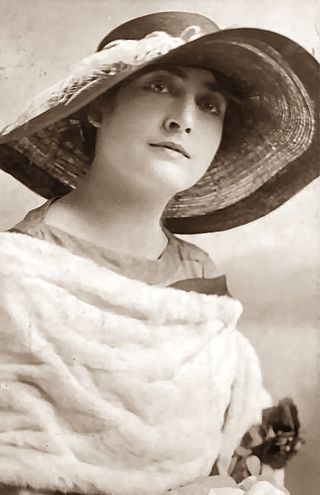
Flore Revalles was a Swiss entertainer active over the early decades of the twentieth century. Revalles began as a singer in Switzerland, danced with the Ballets Russes in Europe and America and appeared in Broadway and Hollywood productions before resuming her singing career in Europe. She is also remembered for being an aunt of the French film star Guy Tréjan (1921–2001).

María Ruanova was an Argentine dancer, choreographer, teacher and ballet master, known for her performances at the Teatro Colón and internationally. She is considered the first Argentina-grown ballet dancer to gain international fame.

William Pitt Striker Earle was an American director of the silent film era. He attended Columbia University and worked for a time as a photographer before breaking into the movie business by sneaking onto the lot of Vitagraph Company of America to observe how directors worked. After a few days of this, Earle approached the studio president and was given his first movie to direct, For the Honor of the Crew, a short about a crew race at Columbia University. He subsequently directed a number of features and shorts for Vitagraph. Later he worked with producer David O. Selznick. Earle founded his own, short-lived production company called Amex Production Corporation with J. S. Joffe, and shot the final two films of his career in Mexico.

Elena Smirnova was the last prima ballerina of the Mariinsky Theater in the Imperial period of Russia. Starring in many leading roles, she often performed choreography created by Marius Petipa and Boris G. Romanov. Participating in early films of Germany and Russia, she made eight silent films and participated in the premiers of both the Ballets Russes in Paris and in the first performance of Russian ballet in Japan.

Xenia Makletzova, sometimes seen as Xenia Maclezova, was a Russian ballet dancer.
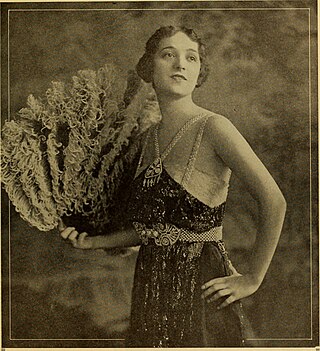
Aimée Dalmores, née Aimée Cerruti, was an Italian-born American actress in musical theatre and silent films.

Martha Caroline Theresa Lorber was an American dancer, actress, singer, model, and Ziegfeld Girl.

Valentina Kachouba, also written as Valentine Kashuba, was a Russian ballet dancer, a member of Diaghilev's Ballets Russes company from 1916 and 1921; as one of the last surviving members of the troupe, her memories and photographs were considered especially valuable as a record of the ballet and its members.

Sophie Pflanz, also known as Zofia Maria Pflanz-Dróbecka, was a Polish ballet dancer with the Ballets Russes from 1911 to 1917.

Lubov Tchernicheva was a Russian ballet dancer. She danced with the Ballets Russes from 1911 to 1929, and continued dancing professionally into her sixties.

Rosetta Dewart Brice, known professionally as Betty Brice, was an American actress in many silent films.

Margareta Petrovna Froman, known professionally as Margarita Froman, was a Russian ballet dancer, dance educator, and choreographer.
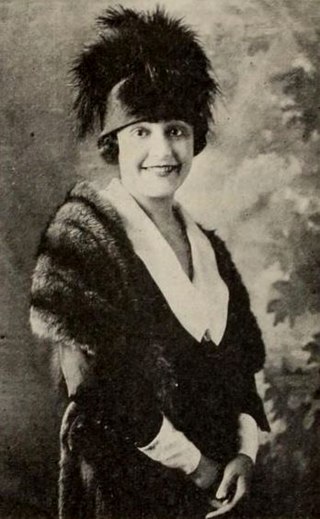
Betty Howe was an American actress in silent films.